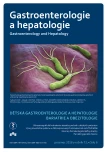Good clinical practice for endoscope rinsing
Authors:
Kožíšek F.
Authors‘ workplace:
Národní referenční centrum pro pitnou vodu, Státní zdravotní ústav, Praha
Published in:
Gastroent Hepatol 2018; 72(6): 531-533
Category:
Digestive Endoscopy: Original Article
doi:
https://doi.org/10.14735/amgh2018531
Overview
If an endoscope is reprocessed and its material only allows chemical disinfection, it has to be finally rinsed with clean water to remove traces of disinfectant. Procedures for cleaning, disinfection, and rinsing are obligatory and defined by legislation in the Czech Republic. The legislation accepts rinsing of digestive endoscopes with either purified water (aqua purificata) or tap drinking water. Tap water may be used under the condition that the source undergo semiannual control according to the guidelines for potable water and monitoring. However, this approach is not scientifically correct because the guidelines are not designed to control for risky microorganisms, which may occur or grow in domestic distribution systems or in taps (Pseudomonas, Staphylococcus, Mycobacterium and Legionella). Also, the frequency of control does not provide any guarantee of water safety if no systematic safety measures are implemented. That is why the endoscopes should be rinsed either with purified water or tap water filtered through a 0.1–0.2 µm filter or disinfected by UV radiation. The most suitable indicators of safety are those listed specifically for this purpose in the relevant technical standard.
Key words:
endoscopy – rinse water – guidelines
Submitted: 31. 1. 2018
Accepted: 16. 4. 2018
The author declares he has no potential conflicts of interest concerning drugs, products, or services used in the study.
The Editorial Board declares that the manuscript met the ICMJE „uniform requirements“ for biomedical papers.
Sources
1. Alvarado CJ, Reichelderfer M. Special Communications. APIC guideline for infection prevention and control in flexible endoscopy. Am J Infect Control 2000; 28 : 138– 55. doi:10.1067/ mic.2000.106054.
2. Joint Working Group of the Hospital Infection Society (HIS) and the Public Health Laboratory Service (PHLS). Rinse water for heat labile endoscopy equipment. J Hosp Infect 2002; 51(1): 7– 16. doi: 10.1053/ jhin.2002.1172.
3. Asage Standards of Practice Committee, Banerjee S, Shen B et al. Infection control during GI endoscopy. Gastrointest Endosc 2008; 67(6): 781– 788. doi:10.1016/ j.gie.2008.01.027.
4. Beilenhoff U, Neumann CS, Rey JF et al. ESGE-ESGENA guideline for quality assurance in reprocessing: microbiological surveillance testing in endoscopy. Endoscopy 2007; 39 : 175– 181. doi: 10.1055/ s-2006-945181.
5. Hygiene requirements for the reprocessing of medical devices. Recommendation of the Commission for Hospital Hygiene and Infection Prevention (KRINKO) at the Robert Koch Institute (RKI) and the Federal Institute for Drugs and Medical Devices (BfArM). Bundesgesundheitsblatt Gesundheitsforschung Gesundheitsschutz 2012, 55(10): 1244– 1310. doi: 10.1007/ s00103-012-1548-6.
6. U.S. Department of Health and Human Services, Centers for Disease Control and Prevention (CDC). Guidelines for environmental infection control in health-care facilities. Recommendations of CDC and the Healthcare Infection Control Practices Advisory Committee (HICPAC). [online]. Available from: https:/ / www.cdc.gov/ infectioncontrol/ pdf/ guidelines/ environmental-guidelines.pdf.
7. Vyhláška č. 306/ 2012 Sb. o podmínkách předcházení vzniku a šíření infekčních onemocnění a o hygienických požadavcích na provoz zdravotnických zařízení a ústavů sociální péče, ve znění vyhlášky č. 244/2017 Sb.
8. Cervia JS, Ortolano GA, Canonica FP. Hospital tap water: A reservoir of risk for health care-associated infection. Infect Dis Clin Pract 2008; 16(6): 349-353. doi: 10.1097/ IPC.0b013e318 181fa5e.
9. Společnost nemocniční epidemiologie a hygieny – organizační složka ČLS JEP, Česká asociace sester – Gastroenterologická sekce. Zásady ošetřování endoskopů. [online]. Dostupné z: https:/ / www.sneh.cz/ _soubory/ _clanky/ 112.pdf.
10. ČSN EN ISO 15883-4 ed. 2. Mycí dezinfekční zařízení – část 4: Požadavky a zkoušky mycích a dezinfekčních zařízení používajících chemické dezinfekční přípravky pro termolabilní endoskopy.
11. ČNS EN ISO 15883-1 : 2009. Mycí a dezinfekčnízařízení – část 1: Všeobecné požadavky, termíny, definice a zkoušky.
12. ČSN EN ISO 6888-1. Mikrobiologie potravin a krmiv – Horizontální metoda stanovení počtu koagulázopozitivních stafylokoků (Staphylococcus aureus a další druhy) – část 1: Technika s použitím agarové půdy podle Baird-Parkera.
Labels
Paediatric gastroenterology Gastroenterology and hepatology SurgeryArticle was published in
Gastroenterology and Hepatology

2018 Issue 6
- Metamizole vs. Tramadol in Postoperative Analgesia
- Current Insights into the Antispasmodic and Analgesic Effects of Metamizole on the Gastrointestinal Tract
- Spasmolytic Effect of Metamizole
- Metamizole at a Glance and in Practice – Effective Non-Opioid Analgesic for All Ages
- The Importance of Limosilactobacillus reuteri in Administration to Diabetics with Gingivitis
Most read in this issue
- Meckel’s diverticulum as a cause of abdominal emergency
- Hepatopathy as the first manifestation of systemic AL amyloidosis
- Wilson’s disease in childhood – two case reports
- News of pharmacological treatment of obesity
